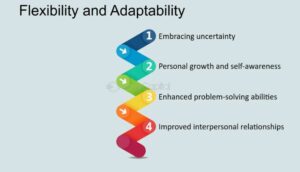
Investment
Investment is the process of putting money into assets or financial instruments with the aim of generating returns over time. It is one of the most effective ways to grow wealth, secure financial stability, and achieve long-term goals. Whether you are saving for retirement, planning for your child’s education, or simply looking to build wealth, the right investment plan can help you reach your objectives.
How Does Investment Work?
Investment works by allocating money into different asset classes that can grow over time. The return on investment depends on the type of asset, market conditions, and the investment duration. There are two main ways investments generate returns:
- Capital Appreciation: When the value of an asset increases over time. For example, if you buy shares at ₹500 and sell them at ₹800, you earn ₹300 as capital appreciation.
- Income Generation: Some investments provide regular income, such as interest from fixed deposits or dividends from stocks.
Key Elements of Investment:
- Principal: The initial amount invested.
- Risk & Return: Higher returns often come with higher risk.
- Investment Horizon: The time duration for which money is invested.
- Liquidity: The ease of converting investments into cash.
Types of Investments
There are various types of investments, each catering to different financial goals and risk appetites.
1. Fixed-Income Investments
These investments offer stable and predictable returns with minimal risk. Suitable for conservative investors.
- Fixed Deposits (FDs): Secure investments with guaranteed interest.
- Public Provident Fund (PPF): Long-term savings scheme with tax benefits.
- Bonds: Issued by governments or corporations with fixed interest payouts.
2. Equity Investments
Investing in stocks or equity mutual funds provides high returns but comes with market risks. Suitable for long-term investors.
- Stocks: Buying shares in companies allows you to benefit from capital appreciation.
- Mutual Funds: Pooled funds managed by professionals, offering diversification.
- Exchange-Traded Funds (ETFs): Trade like stocks but track an index.
3. Real Estate Investment
Investing in property for rental income or capital appreciation is a tangible way to grow wealth. However, it requires a significant initial investment and has lower liquidity compared to other asset classes.
4. Gold & Precious Metals
Gold has been a preferred investment for centuries, offering a hedge against inflation and economic instability. Investors can buy physical gold, digital gold, or gold ETFs.
5. Long-Term Investment Plans
These plans help individuals build a substantial corpus over time by investing in structured financial products.
- Unit Linked Insurance Plans (ULIPs): Combine investment with insurance.
- Endowment Plans: Offer maturity benefits along with life cover.
- Retirement Plans: Help in wealth accumulation for post-retirement needs.
Why is Investment Important?
Investment plays a crucial role in financial planning and wealth creation. Here’s why investing is essential:
1. Wealth Creation
Investing helps individuals grow their wealth over time through compounding and appreciation. The earlier you start, the greater your returns due to the power of compounding.
2. Financial Security
Having investments ensures financial stability during emergencies, retirement, or unexpected expenses. A diversified portfolio minimizes risks and provides security.
3. Beating Inflation
Inflation erodes the purchasing power of money. Investing in high-return assets helps your savings grow at a rate that outpaces inflation.
4. Passive Income Generation
Investments like rental properties, dividends from stocks, and interest from bonds create passive income, reducing dependency on a single source of income.
5. Achieving Life Goals
Whether it’s buying a house, funding education, or planning a dream vacation, strategic investments make these goals financially feasible.
How to Start Investing?
If you’re new to investing, follow these steps to build a strong financial foundation:
1. Set Clear Goals
Identify why you want to invest—be it wealth creation, retirement planning, or financial security.
2. Assess Your Risk Appetite
Understand how much risk you are willing to take. Conservative investors may prefer FDs and bonds, while aggressive investors might opt for stocks and mutual funds.
3. Choose the Right Investment Plan
Select investment products that align with your financial goals. Long-term investment plans are ideal for wealth creation.
4. Start Small and Stay Consistent
You don’t need a large sum to start investing. Begin with SIPs in mutual funds or recurring deposits and increase your investment over time.
5. Diversify Your Portfolio
Spread investments across different asset classes to minimize risk and maximize returns. A mix of equity, fixed income, real estate, and gold ensures stability.
6. Monitor and Rebalance Regularly
Review your investments periodically and make adjustments based on market conditions and financial goals.
Final Thoughts
Investment, a cornerstone of sound financial planning, empowers individuals to cultivate wealth, safeguard their future, and realize their aspirations. It serves as a bridge between present resources and future financial security, offering a pathway to achieve financial goals and attain peace of mind.
In essence, investment is a powerful tool that empowers individuals to take control of their financial destiny. By embracing the principles of prudent investment, individuals can pave the way for a prosperous future and attain financial well-being. Remember, the best time to start investing is today. Let your money work for you, and unlock the doors to a brighter financial future.






